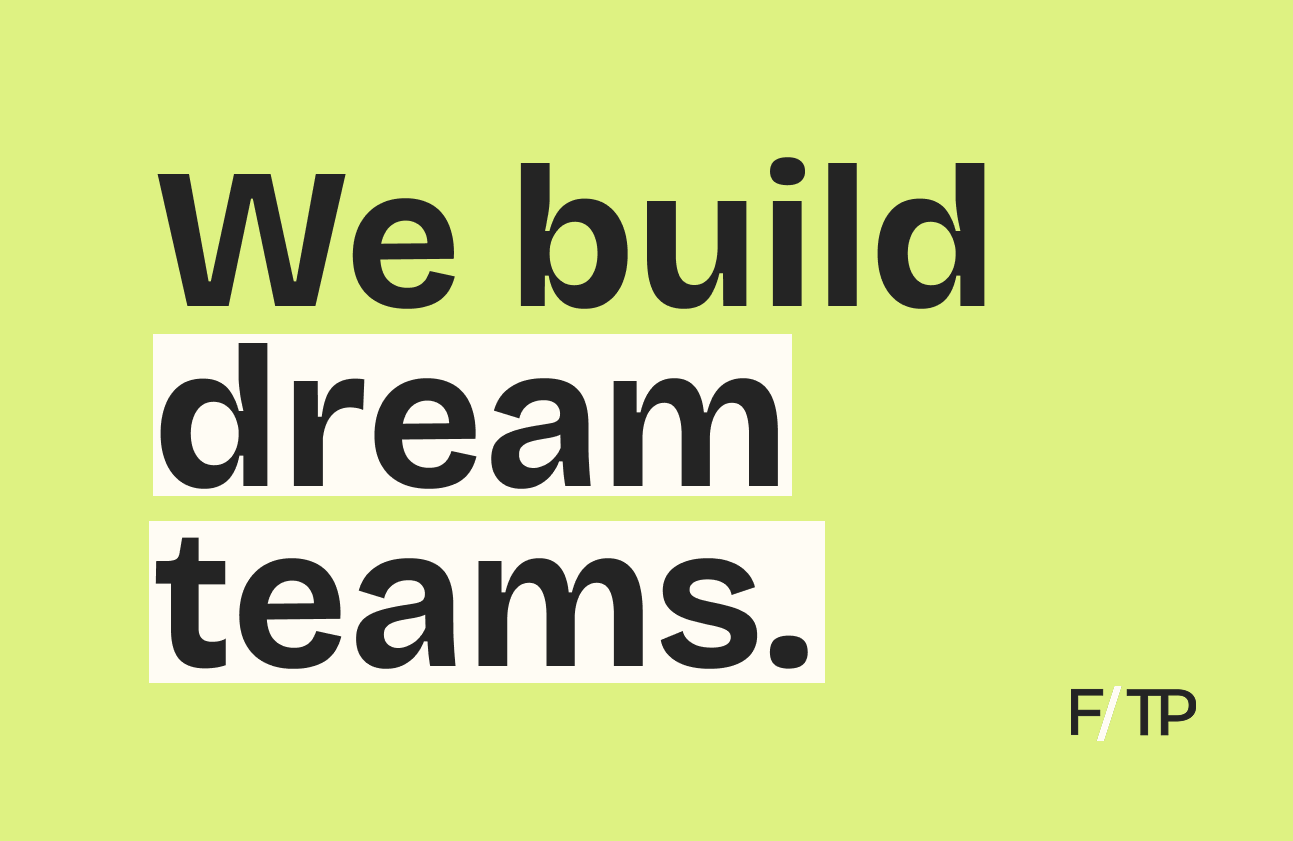In 2011, billionaire investor Marc Andreessen declared “software is eating the world.”
Ten years and one global pandemic later, the effects are [finally] transforming fitness.
Then and Now
Nothing new, technology has impacted every aspect of our lives. But the fitness industry has been slow to evolve.
Don’t believe us? Think back to 2019.
- The global online/virtual fitness market was estimated at $6B.
- Digital/on-demand options accounted for 6% of total fitness spending.
That fall, Peloton filed to go public. Despite having doubled its revenue each year since 2016 and earning a $4B private valuation, the company was widely mocked.
A popular opinion of the moment, the NYT likened Peloton to the Thighmaster and Tae Bo, writing:
“As far as indoor cycling machines go, the $2,245 Peloton bike is nothing special. It has a sleek black and red frame. It has a big screen. It’s on Wi-Fi.”
In early 2020, even as Peloton’s valuation reached $8B, doubt continued to swirl. By mid-March, everything changed.
Like countless industries, the pandemic pulled fitness into the future. And Peloton, like other at-home exercise companies, skyrocketed.
Meanwhile, gyms and studios shuttered. Having previously ignored or deprioritized virtual opportunities, top-tier brands like Barry’s relied on Instagram Live to engage with members. Saddled with debt, big-box gyms with no digital strategy were forced into bankruptcy.
Of course, 2020 was an anomaly. But the great acceleration of digital/connected exercise was only possible because industry incumbents were slow to innovate in the first place.
Take this graphic from Peloton’s S-1 for instance. It reads:
“We are a technology, media, software, product, experience, fitness, design, retail, apparel, and logistics company.”
A meme 24 months ago, this framework has become the blueprint for the modern-day fitness organization.
Playing Catch-up
Before the pandemic, fitness operators debated the impending gympocalypse.
The argument for those in favor of gym/studios: The “Netflix of fitness” fad will pass. Plus, no one wants to work out at home.
The counter from the at-home crowd: Going to the gym is inconvenient and the business model is broken. High-tech home workouts are the future.
To be clear, this isn’t an argument for or against either side. In our view, increasing access to physical activity, not just fitness, is the answer.
Still, the point remains: In a year’s time, the debate over at-home or in-person has all but disappeared.
Now, omnichannel is the rallying cry of gyms/studios. Meanwhile, digital/connected fitness companies are racing to win over exercisers and market share.
Ultimately, the consumer will decide if, when, and how they work out. To them, more options are better. But as they sample different digital and physical options, the companies that deliver a personalized, engaging, and effective experience will win.
And therein lies the crux of the post-COVID conversation about the future of fitness.
While some brands play catch-up—rushing to launch an app or online content—leaders in the space are rolling out new products complete with form tracking and real-time feedback.
Now, whether it’s at-home or in-person, using technology to improve the customer experience is table stakes. Reshaping the industry, fitness brands want to be technology companies while the world’s most lucrative tech companies are pushing into fitness.
Fitness. It’s What’s For Dinner.
From artificial intelligence (AI) to computer vision (CV) and machine learning (ML), not to mention the impact of augmented and virtual reality, the innovation coming to fitness has only just begun.
- The online/virtual fitness market is expected to top $59B by 2027.
- The global artificial intelligence market is expected to reach $500B by 2024.
- By 2030, the global IoT market will reach 24.1B devices and $1.5T in revenue.
Across the industry, all signs point to more software, more technology, and more disruption to come.
Apple. On its own, Fitness+ isn’t all that impressive. But, as part of the all-things-Apple bundle, including HealthOS, GymKit, and Apple Watch, as well as a rumored mixed reality headset, a fitness offering gets interesting, fast.
Cure.fit. In January, Cure.fit acquired Onyx, an AI/CV workout app. And last week, they entered home equipment, acquiring connected fitness maker TREAD. Combined with its existing network of gyms, telehealth services, and food delivery operations, Cure.fit is taking a truly hybrid approach.
Peloton. By acquiring Atlas Wearables, Aiqudo, and Otari, Peloton added wearables, an AI-powered voice assistant, and interactive workout mat to its arsenal. That’s in addition to its digital/at-home offering and Precor’s commercial business. Putting the pieces together, Peloton is building a fully integrated experience, regardless of where or how you choose to sweat.
Terra. Billed as “Plaid for fitness”, last week, this YC-backed startup raised $2.8M in seed funding. For context, Plaid acts as an intermediary between finance apps like Venmo and banks. Similarly, Terra lets users connect their health data to different apps. While Terra is early, their vision, and others like Human API, are unlocking siloed data to empower integrated offerings.
Personalization. A buzzword, so-called personalized options are actually dealing in preferences, showing us options for the instructor, music, or workout modality we like. That, or AI-powered apps simply generate individualized workouts based on limited inputs — perceived difficulty, weight lifted, reps performed, etc.
But, we’re moving closer to a world where digital providers can prescribe a specific routine based on health data. Same goes for minimizing risk of or compensating for an injury or imbalance. And predicting or adjusting for performance in real time is becoming a reality.
In-person. As more gyms/studios launch digital offerings, syncing in-person/at-home is a challenge and an opportunity. Using Amazon Go-like technology, engineering a truly smart gym isn’t that far off. Aside from better understanding utilization, gyms could create programs and offers tailored to their clientele. Looping in trainers and staff, the in-person experience would offer a level of personalization at-home could only dream of.
Not So Fast
A question we return to often: Does all this innovation amount to anything in the way of health outcomes?
According to Ezekiel Emanuel, a professor of medical ethics and health policy at the University of Pennsylvania’s Perelman School of Medicine, AI and other software tools are no panacea. Because, as Emanuel points out, they don’t address the biggest problem: human behavior.
The hope, of course, is that wearables, workout routines, dietary choices, and lab tests allow us to truly personalize our health. For now, it’s more of an experiment in optimization.
👀 Fitness in VR
Is virtual reality overhyped, or is it the future of fitness?
On the Fitt Insider podcast. FitXR co-founder and CEO Sam Cole joined us to discuss the challenges and opportunities in VR exercise.
What it is: A virtual fitness club bringing fun and immersive workouts to the home, FitXR offers boxing, HIIT, and dance classes in single- and multi-player modes.
We cover: Hoping to engage a new demographic beyond exercise enthusiasts, Sam talks about developing content and building community in VR. And we explore the idea of a Travis Scott x Fortnite-like event for group fitness.
Listen to the episode here.
🤝 Digital x Physical
Barry’s and FORME Life announced an exclusive content and retail partnership.
Who’s who. With 78 locations in 14 countries, Barry’s is a prominent fitness studio. Known for its signature Red Room workouts, the brand has cultivated a passionate and loyal community.
A relative newcomer to connected fitness, FORME launched pre-sales of its workout mirror in May of 2020, shipping the first units in the fall of last year.
The details. Barry’s recently teased “X”, its forthcoming digital content offering. Alongside a virtual subscription, and part of this new partnership, Barry’s X content will be available exclusively on FORME devices.
Boosting its retail presence, FORME will be displayed and sold at Barry’s studios.
Zooming out: As our lead story makes clear, digital content is table stakes. As fitness, technology, and retail converge, brands have to get creative in hopes of forging deeper customer relationships.
Linking retail and fitness, lululemon’s $500M acquisition of MIRROR is a prime example. A different approach, in addition to the SoulCycle at-home bike, Equinox+ curates content from brands outside the Equinox umbrella, like TB12 and [solidcore].
Elsewhere, the Beachbody x MYXfitness SPAC saw a content company enter hardware. And Xponential Fitness CEO Anthony Geisler told us his brands could also enter connected equipment.
Punchline: In the battle for distribution and differentiated content, expect to see more partnerships and acquisitions down this path.
🧠 Smarter Rings
Visa is teaming with Japanese health and beauty company MTG Co. to offer a smart ring for touchless payments.
What it is: The “EVERING” ring is a digital wallet and key, letting people lock their door or check out at the store. The ring is waterproof, doesn’t require charging, and links with the wearer’s credit card and smartphone. Of note, it’s not an activity/health tracker.
The big picture: The pandemic accelerated interest in wearable technology and touchless payments.
- By 2024, mobile wallets will account for one-third of all point-of-sale transactions globally.
- Wearable devices sales are expected to reach $81.5B in 2021, an 18.1% increase from $69B in 2020.
On the payments front, palm scans and facial recognition allow users to check out on the go.
Meanwhile, wearable makers like Apple have taken aim at this trend. Beyond payments, the company is transforming its digital wallet into a personal passport, complete with driver’s licenses and house keys.
And last year, smart ring maker Motiv was acquired by Proxy, a company working on digital identities, in an effort to alter the way we interface with the physical world.
What to watch for: As we pointed out in our report on smart ring maker Oura, the company seems poised to enter payments.
In May, Oura added $100M in Series C funding. Square, a financial services company, is an Oura investor. So is the company’s chief executive Jack Dorsey (who also presides over Twitter). Plus, Square’s hardware lead, Jesse Dorogusker, sits on Oura’s board.
To that end, on the Fitt Insider podcast, Oura CEO Harpreet Singh Rai said the relationship with Square is “amazing” and Dorogusker has been “tremendously helpful,” adding:
“I do think there are lots of interesting things we can do with payments… so there could be something there in the future.”
📰 News & Notes
- ICON rebrands to iFit Health & Fitness.
- Cool health and fitness jobs from our network.
- lululemon files for new health & fitness patents.
- Join the team: we’re hiring a News & Trends Writer.
- Connected strength upstart Tempo launches yoga classes.
- WIT Fitness inks an eCommerce/retail partnership with CrossFit.
- Techstars Sports announces 11 startups joining the Indy accelerator.
- The app that monetized doing nothing. [Reread: Billion-Dollar State of Mind]
- National parks are too crowded to stay open. [Reread: The Outdoor Economy]
💰 Money Moves
- Lyra Health, a provider of mental healthcare benefits for employers, added $200M in funding.
More from Fitt Insider: WFH Wellness - Cerebral, a digital platform for psychiatric and behavioral therapy services, raised $127M in Series B funding at a $1.23B valuation.
More from Fitt Insider: Peak Burnout - Fresha, a business management platform for beauty and wellness services, closed a $100M Series C round led by General Atlantic
- Denmark-based Lenus, a platform helping online fitness instructors build their businesses, landed a €50M Series A investment by EQT Ventures.
More from Fitt Insider: Arming the Rebels - Cure.fit acquired TREAD, a Bengaluru, India-based connected fitness startup. Terms were not disclosed. Last fall, TREAD raised $1.1M in seed funding.
- Smart mattress maker Eight Sleep announced new funding from a variety of athletes, celebrities, and entrepreneurs, including Alex Rodriguez and Kevin Hart.
On the pod: Eight Sleep CEO Matteo Franceschetti - The Pill Club, an online prescription and delivery service for birth control, raised $41.9M in fresh capital.
- UpLift, a platform to find in-network therapists, emerged from stealth with $3.1M in funding from Redesign Health.
- Framework, a platform for wellness businesses to set up virtual communities, raised $3M in seed funding led by True Ventures.
- Poppy Seed Health, a telehealth app for pregnant and postpartum women, raised $1.6M in pre-seed funding led by Seven Seven Six.
More from Fitt Insider: Femtech 2.0 - Faculty, a men’s makeup and grooming brand, landed $3M in seed funding led by Estée Lauder.
More from Fitt Insider: The New Wave of Men’s Wellness - Terra, a Y Combinator-backed startup building an API for fitness and health data, closed a $2.8M funding round with participation from General Catalyst, Samsung Next, and NEXT VENTŪRES.
- Berlin-based mental fitness startup Flow Lab raised a €1M ($1.2M) investment round led by IBB Ventures.
- Hard kombucha brewer JuneShine closed a Series A funding round with participation from musical artist Diplo, Outdoor Voices founder Ty Haney, and RXBAR/Litani Ventures founder Peter Rahal.






